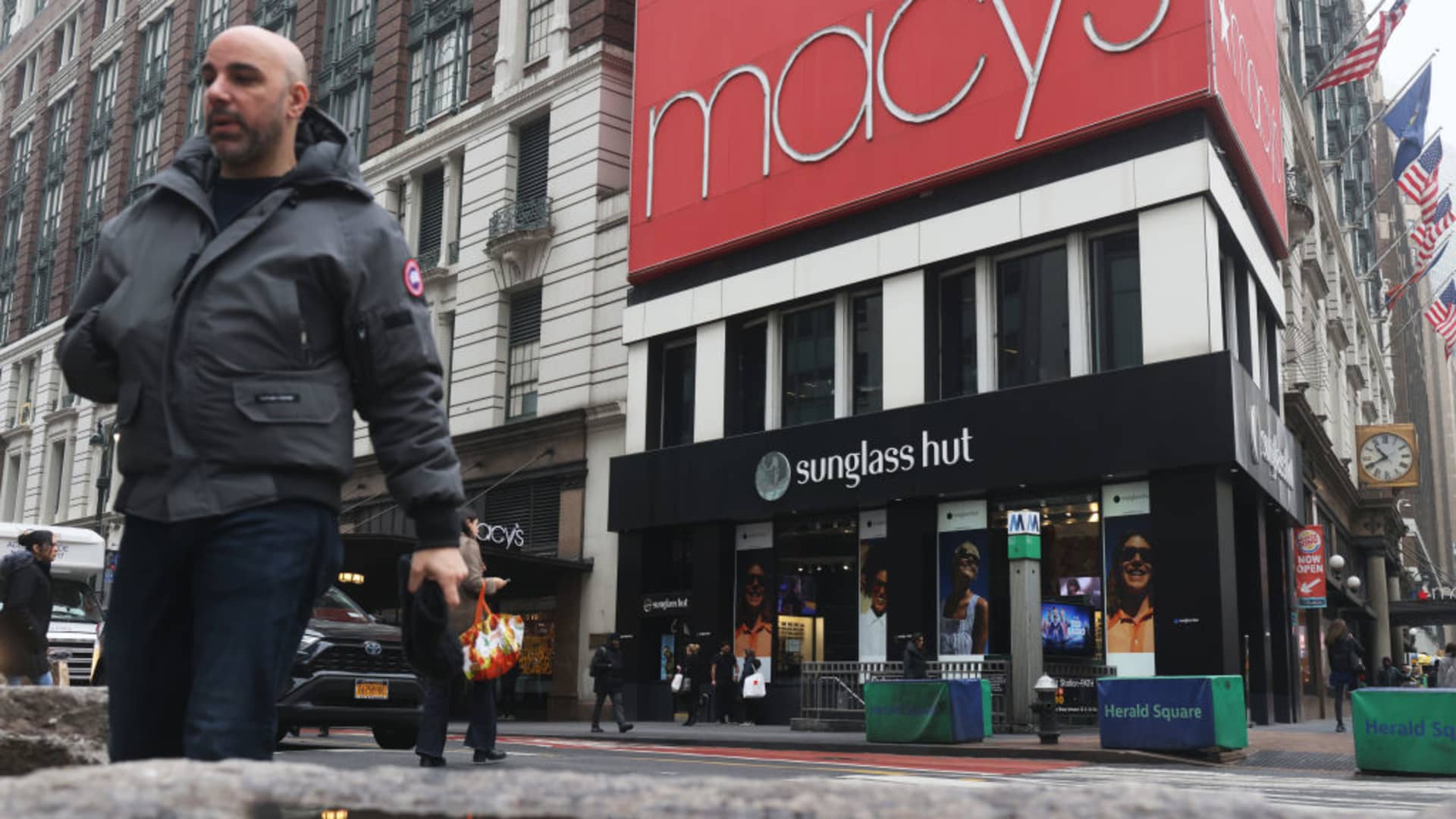Macy’s shares fell on Thursday, as the retailer slashed its full-year outlook and said it saw sales significantly weaken in late March.
The company’s stock dropped as much as 10% in premarket trading even as it beat first-quarter earnings expectations.
The department store operator said it now expects sales of $22.8 billion to $23.2 billion for the year, down from a previous range of $23.7 billion to $24.2 billion. Macy’s anticipates comparable owned-plus-licensed sales will fall 6% to 7.5% during the period, worse than its previous outlook of a 2% to 4% decline.
For the year, it expects adjusted earnings per share of $2.70 to $3.20 — a major reduction from the previous $3.67 to $4.11 a share guidance.
In an interview with CNBC, CEO Jeff Gennette said the retailer took a conservative stance for the rest of the year after seeing a spring pullback. He said the company has marked down seasonal merchandise and cut orders as it prepares for the coming quarters.
Weaker sales cut across Macy’s brands, including higher-end Bloomingdale’s and beauty chain Bluemercury, he said.
Here’s how Macy’s did for the three-month period that ended April 29 compared with what Wall Street was anticipating, based on a survey of analysts by Refinitiv:
- Earnings per share: 56 cents adjusted vs. 45 cents expected
- Revenue: $4.98 billion vs. $5.04 billion expected
First-quarter net income for Macy’s was $155 million, or 56 cents per share, compared with $286 million, or 98 cents per share, a year earlier.
Revenue fell about 7% to $4.98 billion from $5.35 billion in the year-ago period. Sales missed analysts’ forecast.
Comparable sales on an owned-plus-licensed basis dropped 7.2% for the quarter, worse than the 4.7% drop expected by analysts surveyed by Refinitiv.
The Macy’s brand saw the steepest year over year declines. Its comparable sales declined 7.9% on an owned-plus-licensed basis. At Bloomingdale’s, comparable sales on an owned-plus-licensed basis fell 4.3%. Bluemercury’s comparable sales grew 4.3% year over year, but growth was slower than the double-digit or high single-digit increases it has put up in other quarters.
Gennette said Macy’s sales have gotten hit as customers’ budgets are squeezed. About half of customers for Macy’s namesake brand have a household income of $75,000 or less.
“They clearly are under pressure, and particularly in our discretionary categories,” he said.
At Bloomingdale’s, he said, the “aspirational customer” who shopped more luxury brands during the pandemic when they had stimulus money has dropped off, too.
Cooler weather also hurt sales, as shoppers held off on buying seasonal items, he added.
But Gennette said the company did see “signs of life in the month of May” as the weather turned warmer. He said spring apparel sales saw an uptick, especially at Bloomingdale’s. The higher-end department store’s sales are ahead of last May, he said.
Beauty has been among the company’s strongest cateogories. Some of the popular pandemic items, such as textiles and housewares, are starting to bounce back, too.
As Macy’s braces for a potentially tougher year, Gennette said it has a new reason for customers to visit in the fall and over the holidays. Starting in October, Nike will return to its stores and website. Macy’s got its last delivery from Nike in December 2021, as the athletic footwear company cut back on wholesale orders and emphasized direct-to-consumer sales.
Macy’s has carried some Nike shoes through a partnership with Finish Line, but it will start to get a fuller assortment.
“We took a pause in our partnership, and we’re now back in it,” he said.
Shares of Macy’s closed Wednesday at $13.59, bringing the company’s market value to $3.69 billion. So far this year, the company’s stock is down 34%. That lags behind the nearly 9% gains of the S&P 500 and approximately 6% loss of the retail-focused XRT during the same period.
This is breaking news. Please check back for updates.
For all the latest Business News Click Here
For the latest news and updates, follow us on Google News.

